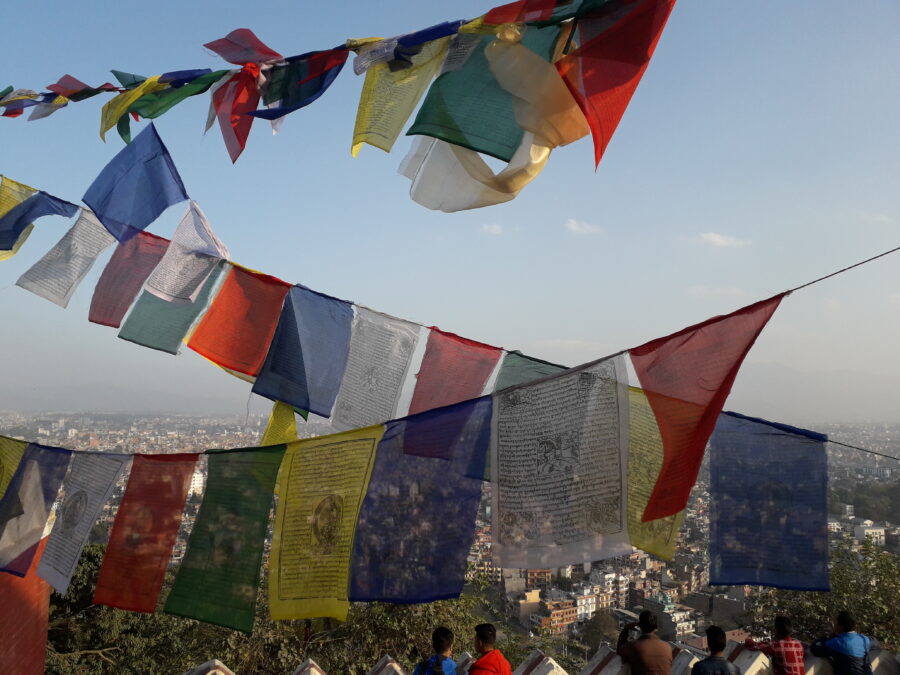Tibetan medicine’s official set up in the capital dates back to the year 1973 and was initiated by an amchi from Tibet. After Doctor Kunsang Phenthok, a student of the renowned Tibetan physician and director of the Chagpori Medical College in Lhasa Venerable Khyenrab Norbu, fled from Tibet and arrived in Kathmandu in 1950, he was ordered by Nepal’s late King Tribhuvan to cure the same who had fallen seriously ill. Following the successful recovery of the King in which the amchi physician played an essential role, King Tribhuvan acknowledged Dr. Kunsang’s work. From thereon, he became appointed as Tibetan Doctor to the King as well as the Royal Family. Later, the government of Nepal granted additional privileges to Dr. Kunsang’s Tibetan medical clinic in Chettrapati, the Kunphen Tibetan Medical Center (short Kunphen).

Kunphen Tibetan Medical Center in Chettrapati, Kathmandu.
First Kunphen received the status of “traditional health trainer” being charged with additional training courses and certification for other amchi in rural Nepal. Second, in 1973, the medical center itself was bestowed with the special status of “Aushadi Udhyog” (medical factory) and registered as the first of its kind in the Department of Drug and Administration under the Ministry of Health and Population. Since then, Kunphen operates a thriving clinic and pharmacy with several physicians and employees.
With time, more Tibetan medical physicians established clinics in Kathmandu, like amchi Tsering Chökyi, a former employee of Kunphen, who set up the first Men-Tsee-Khang branch clinic in Boudhanath, one of Kathmandu’s outer wards, in the 1970s. Nowadays, there are about 25 to 30 private Sowa Rigpa clinics in Kathmandu, clustering mainly around the important Buddhist and Hindu pilgrimage sites of Boudhanath and Swayambhunath. While none of these clinics is officially registered under the Department of Health and Population, they are operating full time and are often managed by up to three amchi and additional staff.
In overall, many of Kathmandu’s amchi do not have much in common except their medical practice and an affiliation to or embodiment of Tibetan cultures. A Tibetan medical practitioner is not bound to a specific cultural or even ethnic identity, although members of this profession learn to share certain identities within their training, such as a common literary language. They do not belong to a homogenous group but could be described as a kind of “interest group” shaped by certain commonalities and at the same time characterized by different religious traditions, lineages, and origins. They arrived in Kathmandu via entirely different routes and almost none of them was born in the city.
Moreover, although Sowa Rigpa has been practiced for centuries in Nepal’s mountainous regions and there are three distinct traditions of Tibetan medicine from, Dolpo, and Solukhumbu, a minority of practitioners nowadays working in Kathmandu’s clinics hails from these areas. Only a few individuals belong to one of Nepal’s ethnically Tibetan groups and grew up in the mountainous areas. Among these individuals, there are also some peculiarities, since the indigenous ethnic Tibetan people of Nepal maintain their distinct cultures and do not share the notion of constituting one distinguishable ethnic category. Their training profiles also vary as they received Tibetan medical education within different settings, may it be in local Sowa Rigpa institutions, within generational or master-apprentice lineage systems, or in Tibetan medical schools abroad.
An even smaller percentage of amchi, only a few individuals, originates from Bhutan or Sikkim. They were mainly trained in Indian Sowa Rigpa institutions and afterwards took up residence in Nepal. Other individuals took up residence in Kathmandu as they were already trained in Sowa Rigpa or decided to enroll in one of the city’s Tibetan medical schools.


